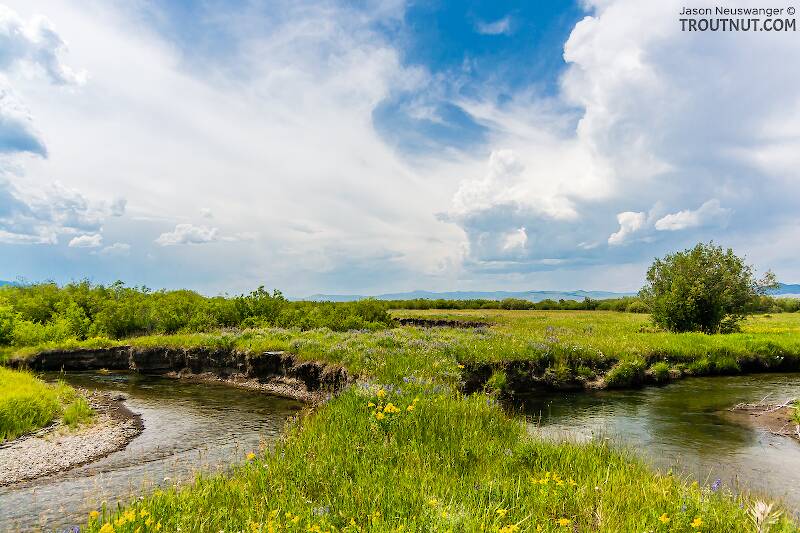
Hex Mayflies
Hexagenia limbata
The famous nocturnal Hex hatch of the Midwest (and a few other lucky locations) stirs to the surface mythically large brown trout that only touch streamers for the rest of the year.


Mayfly Species Eurylophella lutulenta (Chocolate Duns)
Species Range
Physical description
Most physical descriptions on Troutnut are direct or slightly edited quotes from the original scientific sources describing or updating the species, although there may be errors in copying them to this website. Such descriptions aren't always definitive, because species often turn out to be more variable than the original describers observed. In some cases, only a single specimen was described! However, they are useful starting points.
Male Spinner
Wing length: 10 mm
A large species of the bicolor group (now a synonym of Eurylophella bicolor); imago distinguished by the sprinkling of very small dark dots on legs, thorax and abdomen.
Face dark brown; a reddish grey streak on the median carina, and two lateral streaks to bases of antennae. Thorax dark reddish brown. Legs greenish yellow, claws brown. Wings hyaline; venation hyaline. Abdomen blackish brown dorsally, segments 8 and 9 rather paler in color. Posterior margins of tergites narrowly darker reddish brown. Pleural fold blackish brown on the margin; a black streak in each stigmatic region. Legs, venter of thorax and the entire abdomen sprinkled with very fine dark dots. Tails reddish brown near the base, paler distally; joinings dark brown.
Nymph
In the male nymph the occipital tubercles are practically wanting, but are much better developed in the female. Rows of dorsal spines diverge to rearward. The spines on tergites 1-3 are long, erect and rather finger-like, and bend backward; on 8 and 9 they are almost obsolete. The postero-lateral spines are well developed, the spine on segment 3 being fully twice as long as its width at the base; the spines on segments 4-8 are very long and curved, bearing spinules and hairs on the margins. The operculum is veined longitudinally and usually bears several to many small pale dots. The color varies from dirty brown to a dark blackish brown; legs brown with pale bands, the femora with pale spots. Tails rather unicolorous brown, the cross bands of paler color less distinct than in E. temporalis (now a synonym of Eurylophella temporalis). An inhabitant of rather large bodies of water.
Start a Discussion of Eurylophella lutulenta
References
- Leonard, Justin W. and Fannie A. Leonard. 1962. Mayflies of Michigan Trout Streams. Cranbrook Institute of Science.
- Needham, James G., Jay R. Traver, and Yin-Chi Hsu. 1935. The Biology of Mayflies. Comstock Publishing Company, Inc.
Mayfly Species Eurylophella lutulenta (Chocolate Duns)
Species Range
Common Names
Resources
- NatureServe
- Integrated Taxonomic Information System
- Global Biodiversity Information Facility
- Described by Clemens (1913)

